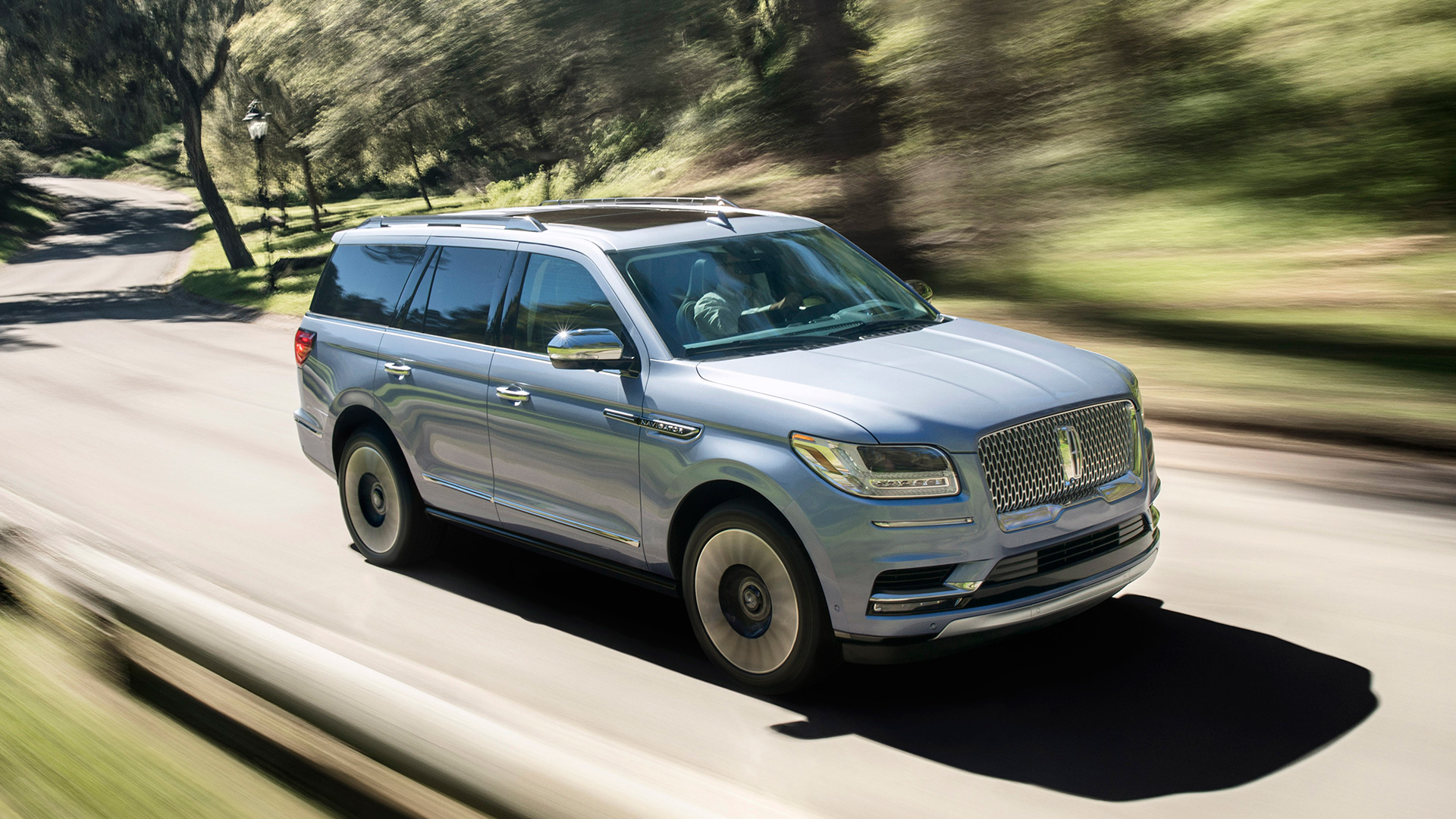Ford Motor Company’s newly redesigned 2018 Lincoln Navigator is the latest card dealt in the premium marquee’s protracted effort to reinvent itself for a younger, hipper generation. The hulking SUV arrives not a moment too soon, too; at last glance, the company’s clientele for its big hauler was the oldest among those who prefer their land yachts of the more luxurious variety, at well over 65 years of age for the average buyer.
Fortunately, while you humble author may have few natural gifts, spotting old-guy cars from a mile away happens to be one of them—and the new Navigator is many things but an old-guy car.
First off, a proper old-guy car is flat and conservative, with smooth corners that won’t dislocate a hip if you bump into them. The Navigator, on the other hand, has too many crisp creases and sharp angles to be ADA-compliant. An old-guy car also feels about a generation behind even when brand-new; this Navigator, with its pitch-perfect proportions and post-modern design flourishes, actually feels a generation ahead of itself. Old-guy cars have pillow-soft recliners for seats that prioritize expanding waistlines over legitimate physical support, but the seats in the new ‘Gator are firm enough to keep you planted in a hard turn, yet sculpted properly for a long drive.
Finally, an old-guy car also tends to be conservative with the application of newfangled gizmos and other tech features septuagenarians are likely to bundle together under the category of “weird stuff,” lest it be a constant reminder that they paid for “all that shit nobody really needs.” Yet this Navigator relishes in the quirks of design and tech, throwing down illuminated Lincoln-logo “welcome mats” onto the ground and softly waking up the taillights and grille logo when you approach. Like the equally-new 2018 Ford Expedition it shares much of its bones with, it coughs up Wi-Fi access for 10 devices, and there are no fewer than six USB ports—as well as a bevy of 12-volt plugs and even a 110-volt outlet. All this basically brings it up to modern expectations. Not a bad thing at all. In fact, after driving the car for a week, I never felt anything less than the cool, young urban sophisticate my teenage daughters think I am.




All right, that’s wishful thinking in terms of how they view me—but the car worked that spell on my own fragile ego at least, and the girls savored the room and amenities offered by the Navigator during a long weekend road trip. They clogged up every single USB port, kicked back in the luxurious second-row—legs casually crossed, a notable achievement for any car—and piped in whatever moron YouTubers they’re into now through the car’s Wi-Fi. There are plenty of other options for entertainment—there are HDMI, USB, and SD inputs to optional 8-inch second-row screens, and there’s Slingbox access that lets kids stream their favorite TV channels straight from home—but Internet access is pretty much all they need these days.
The Sync 3 system from Ford also provides something called AppLink that lets the front row monitor and select what the middle-row occupants are watching, as well as Apple CarPlay and Android Auto, all accessed through either the expansive front touchscreen or steering wheel controls. Exactly none of those are my current favorite infotainment systems in the world at the moment—all are stymied by clunky interfaces and absurd levels of nanny-car usability interference—but they represent the current de facto standard, and their legibility is admittedly beyond reproach. On a brighter—and even clearer—note, the sleek 12-inch instrument cluster can be customized to prioritize information, and the head-up display is enhanced for improved legibility.
Clearly intent on easing and enhancing the owner experience as much as possible, Lincoln also went in on a few grace notes throughout the Navigator. The front seats have massage, heating, and cooling functions, and can be adjusted 30 ways to boot; ambient lighting sets the mood inside at night; and laminated glass helps muffle road and wind noise. The optional 20-speaker Revel II audio system will makes Gordon Lightfoot or The Limeliters feel as though they’re right there in the car with you. [Methinks musical references like that make it apparent why Eric is so good at spotting “old guy cars.” —Ed.] A cargo management system features an adjustable shelf behind the rear seats that can help ensure that golf balls and groceries and stuff won’t roll out when you park on an incline and open the tailgate.
Wait, did I say golf balls? I guess these are all sort of old-guy-friendly enhancements, to a degree, but it works on us younger blokes—erm, way younger—just as well.






Finally, there’s the new Navigator’s performance. The 450-horsepower, twin-turbo V6 and the 10-speed transmission, coupled with a lighter aluminum body that shaves 200 pounds off the previous generation’s bulk, conspire to deliver smooth performance with ample power when you need it, and you can dial in the suspension and traction settings based on the conditions. During driving in a variety of cold, wet, slippery conditions, the Navigator felt planted, with little of the road-going sponginess found in previous generations. There’s still a tendency to feel the overall weight in turns—at around 5,900 pounds for a four-wheel-drive version, it remains a massive vehicle—so there are still challenges for Lincoln’s engineers to tackle. On the other hand, it’s not remotely meant to be a sporting machine. Competent, yes, and predictable, but not something you throw into twisties like some young street-racing thug, right?
Okay, maybe this is actually a pretty solid old-guy car, after all. But in this case, at least, that’s no slight.

2018 Lincoln Navigator—Specs:
Base Price: $72,055
Powertrain: 3.5-liter twin-turbo V6, 450 horsepower, 510 pound-feet of torque; 10-speed automatic; rear- or four-wheel-drive
Fuel Economy: 16 mpg city, 23 mpg highway (4×4 model)
0-60 MPH: Quicker than you’d think
Proper number of “hahs” following the word “navigate” in Gorillaz’s “Feel Good Inc:” Five
